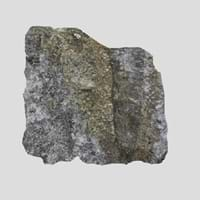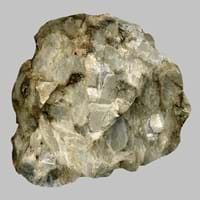Definition
Marl is an unconsolidated sedimentary rock consisting of clay and lime
Sovite is a coarse-grained variety of carbonatite which belongs to intrusive igneous rock
Discoverer
Unknown
Unknown
Etymology
From Old French marle, from Late Latin marglia
Not Available
Class
Sedimentary Rocks
Igneous Rocks
Sub-Class
Durable Rock, Soft Rock
Durable Rock, Soft Rock
Group
Not Applicable
Plutonic
Other Categories
Fine Grained Rock, Opaque Rock
Coarse Grained Rock, Fine Grained Rock, Medium Grained Rock, Opaque Rock
Texture
Earthy
Granular, Poikiloblastic
Color
Beige, Brown, Green, Grey, White
Black, Brown, Colourless, Green, Grey, Pink, White
Durability
Durable
Durable
Appearance
Rough and Dull
Dull, Banded and Foilated
Interior Uses
Decorative Aggregates, Floor Tiles
Decorative Aggregates, Homes
Exterior Uses
As Building Stone, Roof Tiles
As Building Stone, Garden Decoration, Office Buildings
Other Architectural Uses
Curbing
Curbing
Construction Industry
Cement Manufacture, Construction Aggregate, for Road Aggregate, Making natural cement, Raw material for the manufacture of mortar
As a Flux in the Production of Steel and Pig Iron, As a Sintering Agent in Steel Industry to process Iron Ore, As Dimension Stone, Cement Manufacture, for Road Aggregate, Making natural cement, Manufacture of Magnesium and Dolomite Refractories, Unknown, Unknown
Medical Industry
Not Yet Used
Taken as a Supplement for Calcium or Magnesium
Antiquity Uses
Artifacts, Jewellery, Sculpture, Small Figurines
Artifacts
Commercial Uses
Creating Artwork, Soil Conditioner
An Oil and Gas Reservoir, As a Feed Additive for Livestock, Creating Artwork, Gemstone, Metallurgical Flux, Production of Lime, Soil Conditioner, Source of Magnesia (MgO)
Types
Clay Marl ,Blue Marl, Red Marl, High Bank Marl, Shell Layer Marl, Under Shell Layer Marl, Sand Marl, Green Marl, Grey Marl and Clayey Marl
Not Available
Features
Generally rough to touch, Is one of the oldest rock, Splintery, Very fine grained rock
Available in lots of colors, Generally rough to touch, Is one of the oldest rock
Archaeological Significance
Monuments
Not Yet Used
Not Yet Used
Famous Monuments
Not Applicable
Not Applicable
Sculpture
Used
Not Yet Used
Famous Sculptures
Data Not Available
Not Applicable
Figurines
Used
Not Yet Used
Formation
Marl forms when very fine-grained clay particles are deposited in water which settles at the bottom of water bodies and are compacted by overlying sediment; the water squeezes out and hence forming Marl rock.
Sovites are formed due to low degrees of partial melting of rocks.
Mineral Content
Calcite, Clay, Dolomite, Gypsum, Micas, Pyrite, Quartz
Ancylite, Apatite, Barite, Fluorite, Magnetite, Natrolite, Sodalite
Compound Content
Aluminium Oxide, NaCl, CaO, Iron(III) Oxide, Silicon Dioxide
CaO, Carbon Dioxide, Sodium Oxide
Types of Metamorphism
Not Applicable
Burial Metamorphism, Cataclastic Metamorphism, Contact Metamorphism, Hydrothermal Metamorphism, Impact Metamorphism, Regional Metamorphism
Types of Weathering
Biological Weathering, Chemical Weathering
Biological Weathering, Chemical Weathering, Mechanical Weathering
Types of Erosion
Chemical Erosion, Coastal Erosion, Water Erosion, Wind Erosion
Chemical Erosion, Coastal Erosion, Glacier Erosion, Sea Erosion, Water Erosion, Wind Erosion
Grain Size
Very fine-grained
Medium to Fine Coarse Grained
Fracture
Conchoidal
Conchoidal
Porosity
Highly Porous
Less Porous
Luster
Dull
Subvitreous to Dull
Cleavage
Not Available
Not Available
Specific Gravity
2.2-2.8
2.86-2.87
Transparency
Opaque
Opaque
Density
2.4-2.8 g/cm3
2.84-2.86 g/cm3
Resistance
Heat Resistant, Impact Resistant
Heat Resistant, Pressure Resistant
Deposits in Eastern Continents
Asia
India, Pakistan, Russia
China, India, Kazakhstan, Mongolia, Russia, Uzbekistan
Africa
Ethiopia, Kenya, Morocco, South Africa
Namibia, Nigeria, South Africa
Europe
Austria, France, Germany, Greece, Italy, Romania, Scotland, Spain, Switzerland
Austria, Denmark, Germany, Great Britain, Netherlands, Norway, Poland, Sweden, Switzerland, United Kingdom
Others
Not Yet Found
Greenland
Deposits in Western Continents
North America
USA
Canada, USA
South America
Colombia, Ecuador, Peru
Brazil
Deposits in Oceania Continent
Australia
New South Wales, Victoria, Western Australia
New South Wales, New Zealand
All about Marl and Sovite Properties
Know all about Marl and Sovite properties here. All properties of rocks are important as they define the type of rock and its application. Marl belongs to Sedimentary Rocks while Sovite belongs to Igneous Rocks.Texture of Marl is Earthy whereas that of Sovite is Granular, Poikiloblastic. Marl appears Rough and Dull and Sovite appears Dull, Banded and Foilated. The luster of Marl is dull while that of Sovite is subvitreous to dull. Marl is available in beige, brown, green, grey, white colors whereas Sovite is available in black, brown, colourless, green, grey, pink, white colors. The commercial uses of Marl are creating artwork, soil conditioner and that of Sovite are an oil and gas reservoir, as a feed additive for livestock, creating artwork, gemstone, metallurgical flux, production of lime, soil conditioner, source of magnesia (mgo).










